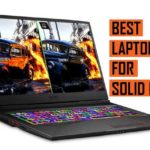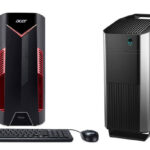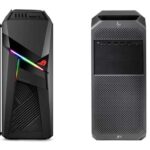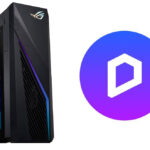What are The Best Desktop Computers for Solid Edge?
This guide exists to help engineers, industrial designers, and technical professionals who rely on Solid Edge make informed desktop buying decisions. If you’re modeling assemblies, running simulations, or generating complex technical drawings, then you know how critical your workstation is.
Parametric modeling, synchronous technology, rendering, simulation in Solid Edge is demanding. You’re likely working with large assemblies, multiple part configurations, and integrated simulations.
A slow machine leads to these problems: viewport lag when rotating large assemblies, slow rebuilds during constraint adjustments, or rendering previews that take far too long. Thermal throttling, poor GPU compatibility, or RAM bottlenecks make matters worse.
We’ve assembled a focused selection of desktop computers optimized for Solid Edge, based on real-world CAD workloads. Each machine we cover comes ready (with no upgrades needed) to meet the demands of professional 3D mechanical design, simulation, and rendering. The emphasis is on precision performance.
Here’s how we assess the desktops. We evaluate based on Processor Strength, GPU Certification and Compatibility, Memory Configuration, Storage Speed, Reliability Features, and Expansion Flexibility. Every system we recommend includes at minimum: a high-frequency Intel Core i7 or AMD Ryzen 7, 32GB DDR4/DDR5 RAM, 1TB NVMe SSD, and a workstation-grade GPU such as NVIDIA RTX A2000 or better.
Processor Strength matters because Solid Edge remains CPU-intensive in areas like part modeling and constraint solving. High clock speeds and strong single-threaded performance ensure smooth parametric edits and fast sketch updates. Intel’s Core i9-14900K or AMD’s Ryzen 9 7950X are ideal choices here, especially for users who rely on synchronous modeling features.
GPU Compatibility play a huge role in graphics stability. Solid Edge is certified for NVIDIA professional GPUs like the RTX A2000, A4000, and higher. These cards are optimized for DirectX and OpenGL rendering pipelines used in CAD applications. A gaming GPU also gives raw power, but workstation cards give precision leading to less viewport flickering, fewer crashes, and better shader accuracy in complex models.
Memory Configuration has to keep pace with complex assemblies. Solid Edge consumes significant RAM when managing multi-body parts, sheet metal features, or integrated simulation data. 32GB RAM is the minimum we recommend. Dual-channel DDR5 offers the bandwidth necessary for large parametric environments, helping you avoid lag during rebuilds or when managing linked documents.
Storage Speed affects not just boot times, but part-loading, save performance, and simulation cache access. An NVMe SSD with read/write speeds above 3000MB/s drastically cuts load times for large assemblies. For users managing part libraries, this matters every day. It reduces idle time and improves iterative design cycles.
Reliability Features like ECC memory (in some workstation models), professional-grade power supplies, and enterprise chipsets reduce the risk of crashes, component failures, or thermal instability. CAD users can’t afford unexpected shutdowns during large renders or simulation runs. We’ve prioritized machines that run consistently, under pressure.
Expansion Flexibility lets you keep up with Solid Edge’s evolution. As Siemens adds capabilities (like integrated CFD or AI-assisted generative design) you’ll want options. PCIe lanes for extra GPUs, spare DIMM slots for RAM upgrades, and extra M.2 slots for additional SSDs help extend the lifespan of your setup.
You should expect systems in this guide to handle real-time editing of large assemblies, photorealistic renders using KeyShot or built-in rendering engines, and FEA simulations—all while maintaining UI responsiveness and file integrity.
Also check: best desktop computers for Civil and Structural Engineering in addition to the best desktop computers for Electrical Engineers.
These are the Best Desktop Computers for Solid Edge (2025):
Contents
- Corsair Vengeance i7500 Series Gaming PC - Liquid Cooled Intel Core i7 14700KF CPU - NVIDIA GeForce RTX 4070Ti GPU - 32GB
- Lenovo Legion Tower T5 Gaming Desktop, Intel Core i7-11700F Processor, GeForce RTX 3060, 32GB RAM, 1TB PCIe SSD + 2TB HDD
- Alienware Aurora R10 Gaming Desktop - AMD Ryzen 7 5800, 16GB DDR4 RAM, 1TB SSD, AMD Radeon RX 6600XT 8GB GDDR6
- HP Victus Gaming Desktop, AMD Ryzen 7-5700G Processor, Radeon RX 6600XT 8GB Graphics(Outperforms RTX 3060), 32GB RAM, 2TB PCIe SSD
- Alienware Aurora R10 Gaming Desktop - AMD Ryzen 7 5800, 16GB DDR4 RAM, 1TB SSD, NVIDIA GeForce RTX 3080
Corsair Vengeance i7500 Series Gaming PC - Liquid Cooled Intel Core i7 14700KF CPU - NVIDIA GeForce RTX 4070Ti GPU - 32GB |
|
|---|---|
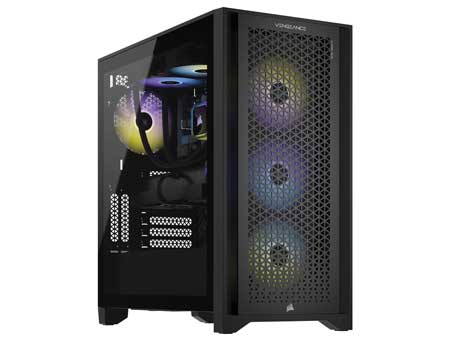 See This On Amazon |
|
| CPU | Intel Core i7 14700KF |
| Processor Speed | 3.4 GHz |
| GPU | NVIDIA GeForce RTX 4070Ti |
| Graphics Card Memory | 12 GB |
| RAM | 32GB |
| Storage Space | 1TB M.2 SSD |
| Operating System | Windows 11 |
| Dimensions | 17.8 x 9.1 x 18.3 inches |
| Keyboard & Mouse | Sold Separately |
| Computer Monitor | Sold Separately |
| Advantages | design and performance |
| Disadvantages | Storage |
Lenovo Legion Tower T5 Gaming Desktop, Intel Core i7-11700F Processor, GeForce RTX 3060, 32GB RAM, 1TB PCIe SSD + 2TB HDD |
|
|---|---|
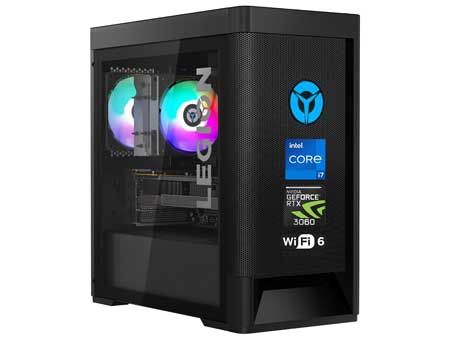 See This On Amazon |
|
| CPU | Intel Core i7-11700F Processor |
| Processor Speed | 2.5 GHz |
| GPU | Nvidia Ge Force Rtx 3060 |
| Graphics Card Memory | 12 GB |
| RAM | 32GB |
| Storage Space | 1TB PCIe SSD + 2TB HDD |
| Operating System | Windows 11 |
| Dimensions | 21.65 x 19.09 x 14.57 inches |
| Keyboard & Mouse | Sold Separately |
| Computer Monitor | Sold Separately |
| Advantages | Value for Money, Very good performance, Large storage |
| Disadvantages | N/A |
Alienware Aurora R10 Gaming Desktop - AMD Ryzen 7 5800, 16GB DDR4 RAM, 1TB SSD, AMD Radeon RX 6600XT 8GB GDDR6 |
|
|---|---|
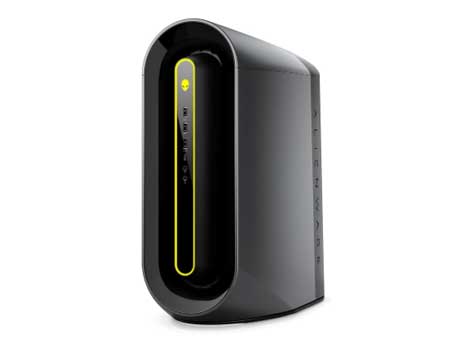 See This On Amazon |
|
| CPU | AMD Ryzen 7 5800 |
| Processor Speed | 4.6 GHz |
| GPU | AMD Radeon RX 6600XT |
| Graphics Card Memory | 8GB GDDR6 |
| RAM | 16GB DDR4 |
| Storage Space | 1TB SSD |
| Operating System | Windows 11 |
| Dimensions | 17 x 8.77 x 18.9 inches |
| Keyboard & Mouse | Sold Separately |
| Computer Monitor | Sold Separately |
| Advantages | Design, Build Quality, Performance |
| Disadvantages | Na |
HP Victus Gaming Desktop, AMD Ryzen 7-5700G Processor, Radeon RX 6600XT 8GB Graphics(Outperforms RTX 3060), 32GB RAM, 2TB PCIe SSD |
|
|---|---|
 See This On Amazon |
|
| CPU | AMD Ryzen 7-5700G |
| Processor Speed | up to 4.6 GHz max boost clock, 16 MB L3 cache, 8 cores, 16 threads |
| GPU | Radeon RX 6600XT 8GB Graphics |
| Graphics Card Memory | 8GB |
| RAM | 32GB RAM |
| Storage Space | 2TB PCIe SSD |
| Operating System | Windows 11 |
| Dimensions | 19 x 15.5 x 12 inches |
| Keyboard & Mouse | Included |
| Computer Monitor | Sold Separately |
| Advantages | Good performance, Value for money |
| Disadvantages | None |
Alienware Aurora R10 Gaming Desktop - AMD Ryzen 7 5800, 16GB DDR4 RAM, 1TB SSD, NVIDIA GeForce RTX 3080 |
|
|---|---|
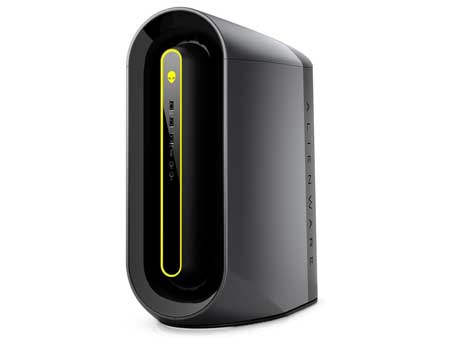 See This On Amazon |
|
| CPU | AMD Ryzen 7 5800 |
| Processor Speed | 4.6 GHz |
| GPU | RTX 3080 |
| Graphics Card Memory | 10 GB |
| RAM | 16GB DDR4 |
| Storage Space | 1TB SSD |
| Operating System | Windows 11 |
| Dimensions | 17 x 8.77 x 18.9 inches |
| Keyboard & Mouse | Sold Separately |
| Computer Monitor | Sold Separately |
| Advantages | Performance, Design |
| Disadvantages | None |
RELATED ARTICLES:
Best Desktop PCs for Autodesk Inventor


